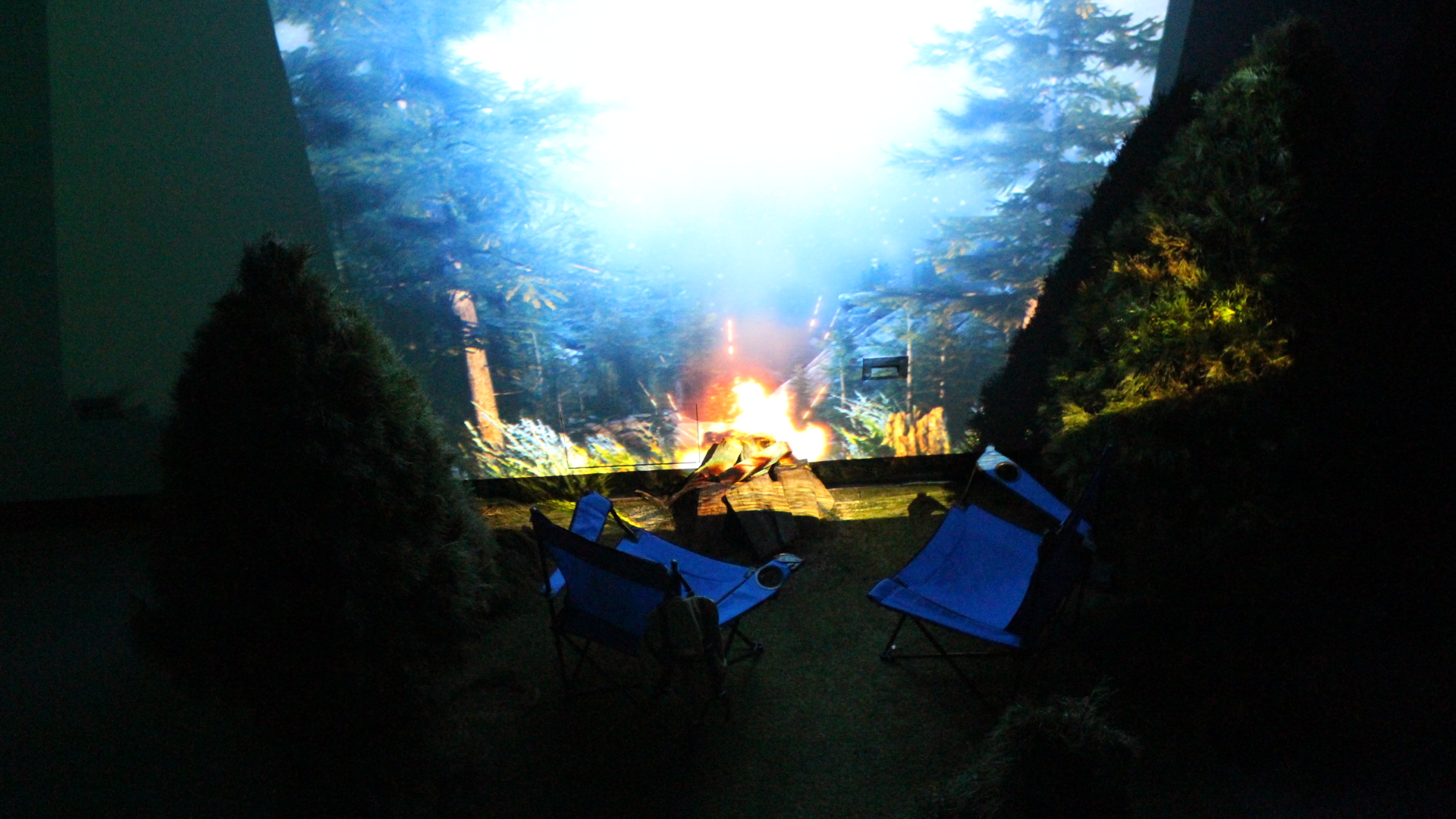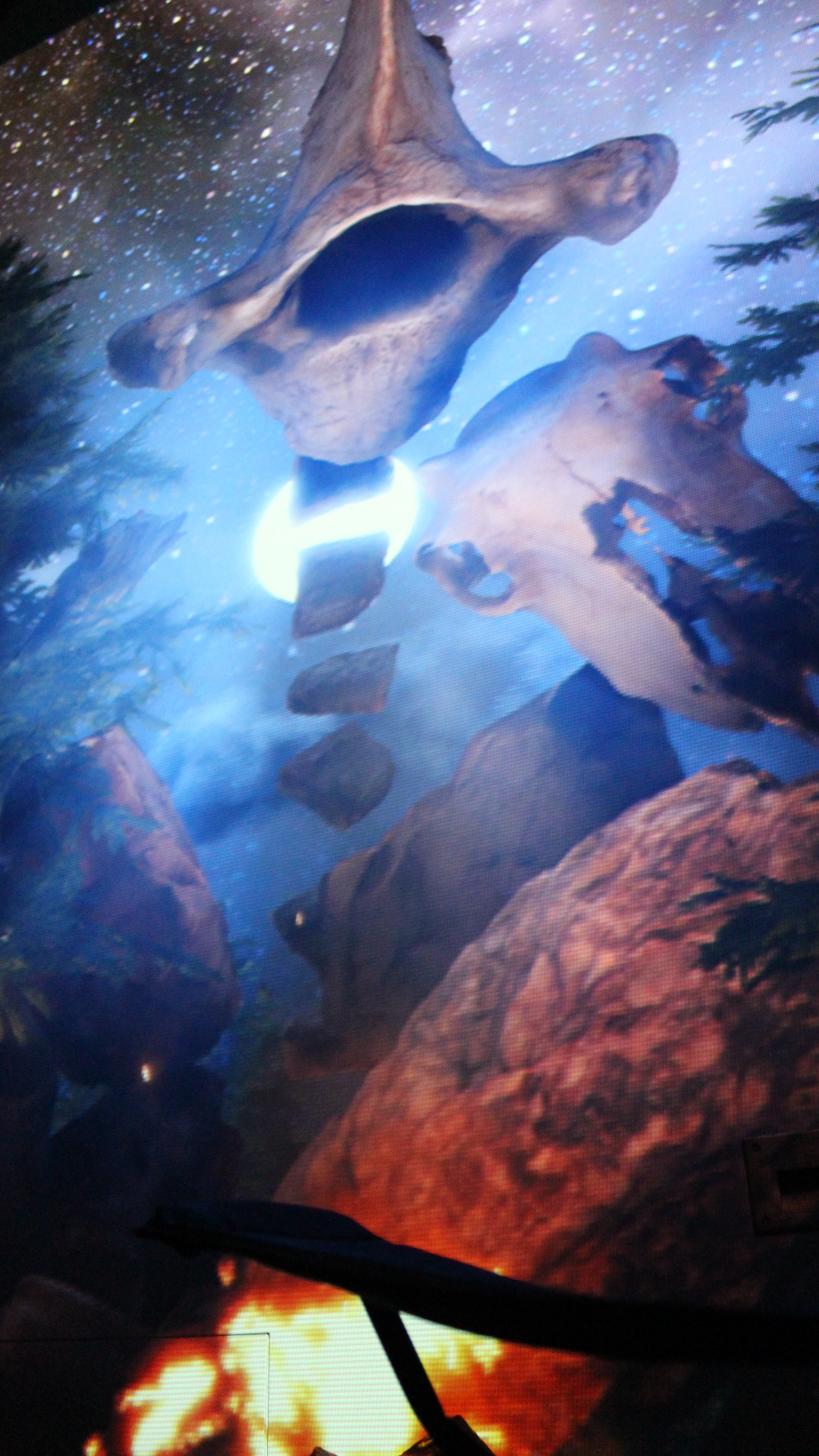






Re: Reality is an ongoing interactive installation work that is designed with Affordance at its center.
Built to contribute to a discussion around the validity of immersion and level of presence within mixed reality spaces, Re: Reality invites its users feel present within the hybrid physical/virtual space, and without needing to hide the systems working parts. Intrigued by how the setting of spaces alone can activate strong emotional responses, I aspired to develop Re: Reality into an explorable space that allows the audience to take a passive or active position within its boundaries and still feel immersed. This multi-sensory mixed reality work utilises positional sound, natural fragrances, passive interaction with the virtual, active involvement with the physical and an upscaled visual feed in order to offer a telepresent experience.
The motivating theory behind Re: Reality is particularly driven by (but not exclusive to) Whitelaw's observation of data as an agent to activate connecting realities which he defines as Transmateriality, and Barfield’s coined term for the highest level of immersion within mixed reality environments, known as Telepresence. Using the root and application of these theoretical terms to build off of, Re: Reality has been designed with the audience’s level of immersion at the forefront of the experience. Inspiration for this work is a combination of mixed reality installation such as Gibson & Martelli’s Vermillion Lake and Refik Anadol’s Melting Memories, as well as video games like Campo Santo’s Firewatch and Jonathan Blow’s The Witness; all of which share a common theme of invitation, immersion, philosophy and presence. It is within this material that the audience is encouraged to feel enveloped by the space with scale, layered narrative and interactive elements to ensure the capacity for exploration.
Re: Reality is both an extension and a combination of two previous works I have developed throughout the course of my Research; Cinder (2017) and Re: Reality (Fowlers Gap) (2018). Though they share conceptual DNA, their approaches to recontextualising the physical with the digital differ and compliment each other. Cinder is designed to have physical elements reinforce the virtual space in order to create an inviting space. Re: Reality (Fowlers Gap) is built with the intent of reappropriating the physical into the virtual in order to personify a site, while still being ultimately screen based. With both systems having unique interactions that equally dictate my desired result, it felt only necessary to combine them.
The visual subject of Re: Reality depicts a natural scape; a valley between cliffs gilded with pine trees on a moonlit night, where the audience is presented with a campfire. Physical properties such as grass, firewood, pine trees and camp chairs are positioned in line with the projection of this scene. When entering the space, the audience is joined by the giant of Fowlers Gap, who constructs itself in the distance. Using motion tracking, the giant is able to follow the positions of the participants and looks between them. Aligning with Miwon Kwon’s analysis of Site-Specific Art, Re: Reality supports the claim that a site is not bound to physicality or even a space to be entered, but instead be anything that can platform a response.
Re: Reality aims to solidify and support the concept that there are no hierarchies in different realities when it comes to experience and emotion, only different levels of involvement.


